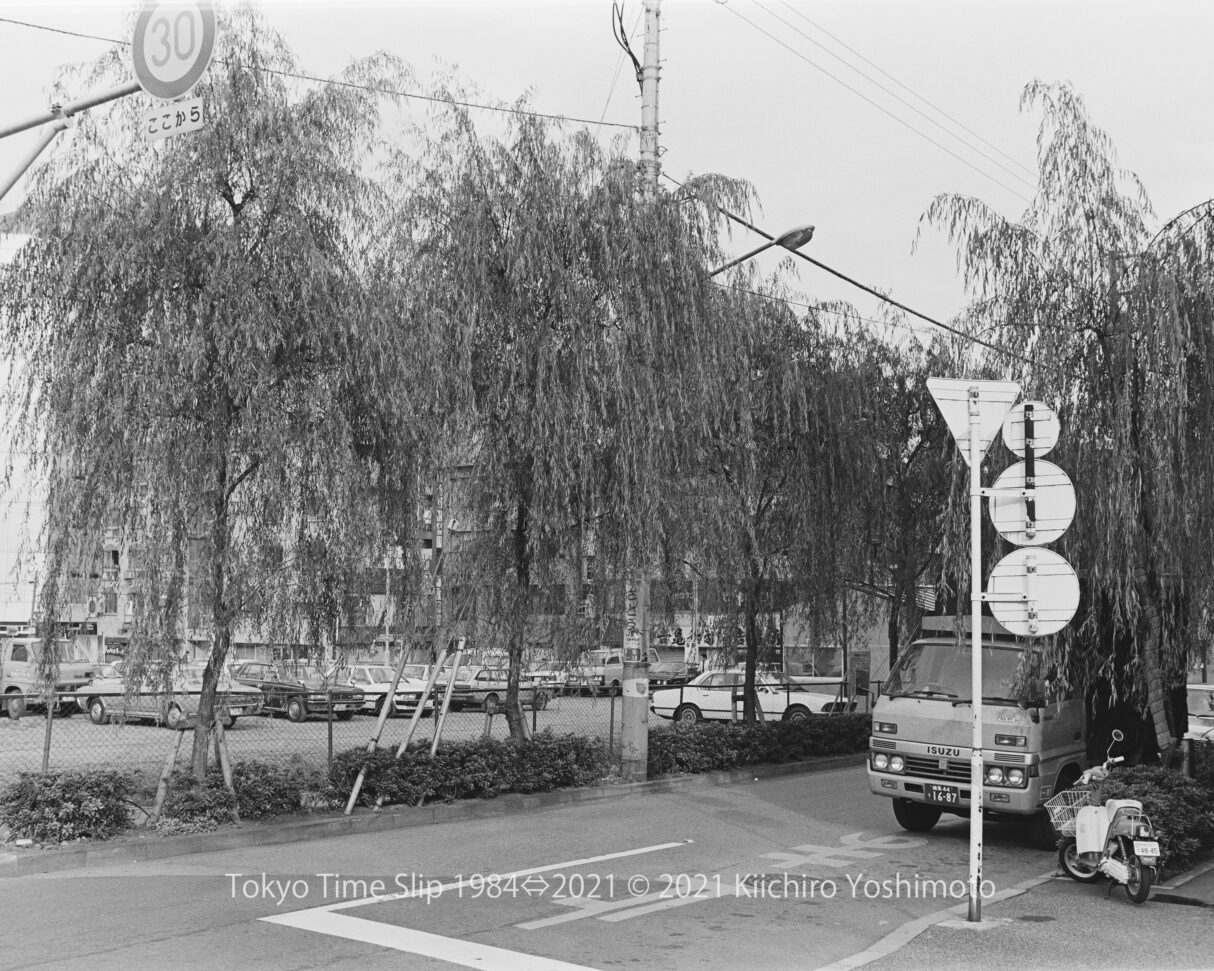
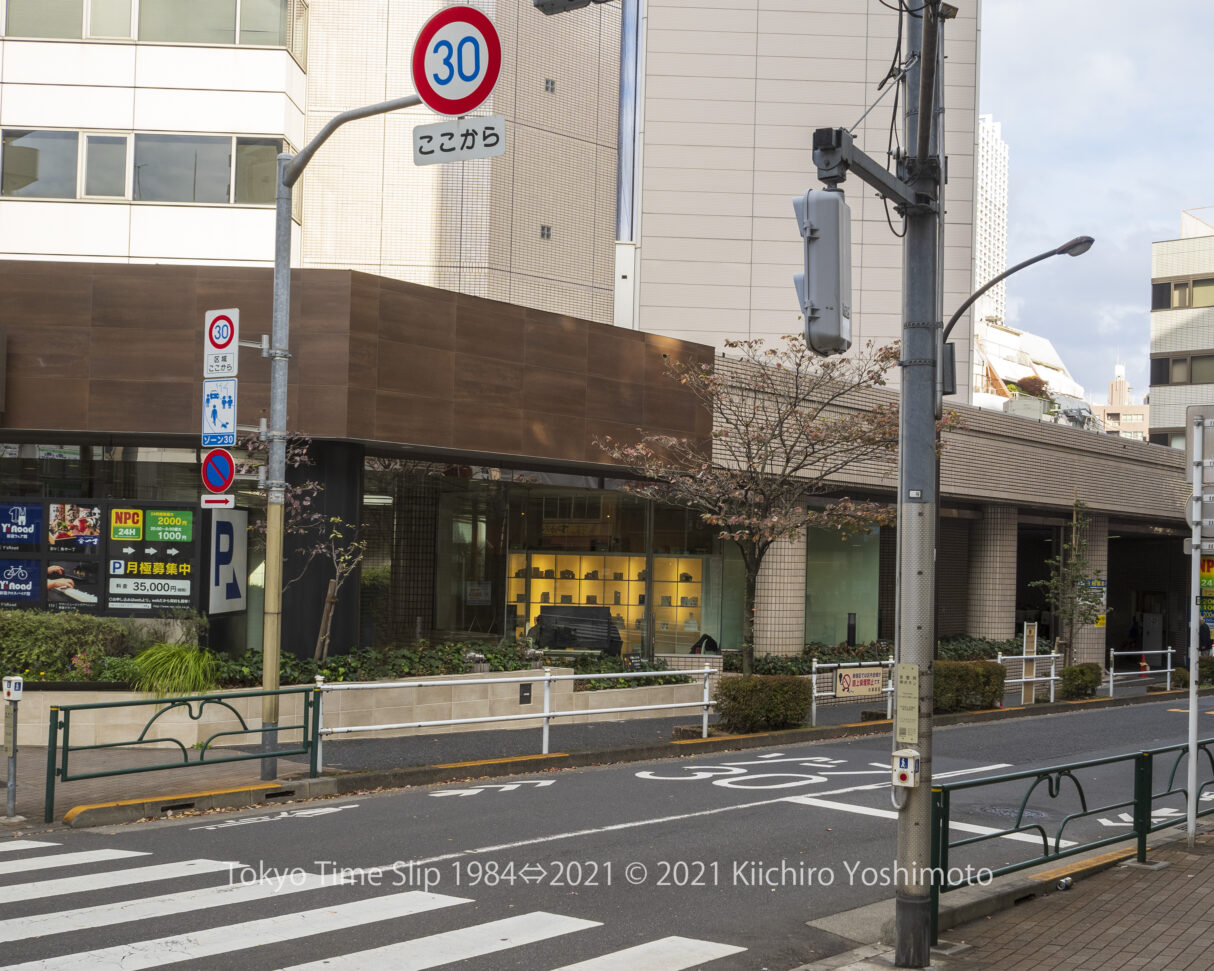
昭和33年の赤線廃止まで、この花園通りの左側が赤線地帯、右側が青線地帯であった。警察の地図には、売春を目的とする特殊飲食店の集まっていた地域を赤い線で囲んでいたことから、赤線地帯は黙認されていた、闇営業と思われる地帯は青線地帯と呼ばれた。今も残る新宿5丁目の交差点交番は、遊郭地帯の監視場所、その隣にポツンと残る風俗店は、当時の営業許可の名残である。柳並木も当時の名残り。見返り柳(みかえりやなぎ)は、遊廓の入り口付近に生えた柳の名称。遊廓で遊んだ男が、帰り道に柳のあるあたりで、名残を惜しんで後ろを振り返ったことからこの名が付いた。
Hanazono-dori Avenue, Shinjuku 2-chome1984⇔2021
Until the abolition of the red line in 1958, the left side of this Hanazono Street was the red line zone and the right side was the blue line zone. On the police map, the area where special restaurants for the purpose of prostitution had gathered was circled with a red line, so the red line zone was tacitly approved, and the area considered to be a black market was called the blue line zone. The police box at the intersection of Shinjuku 5-chome, which still stands today, is a monitoring point for the brothel zone, and the brothel that remains next to it is a remnant of the business license that was granted at that time.The rows of willow trees are also remnants of those days.Mikaeri Yanagi is the name of the willow tree that grows near the entrance of the brothel. The name comes from the fact that men who played at the brothel would look back at the willow on their way home to regret what they left behind.
柳のある暮らし
春一番の風が吹くころ、川辺の柳がそっと芽吹く。まだ寒さの残る空気の中で、いち早く命を動かすその姿に、昔の人々は特別な力を感じたのだろう。柳は、ただの木ではない。邪気を祓い、福を招く神聖な木として、長く人々の暮らしに寄り添ってきた。
江戸城を築いた太田道灌が、鬼門にあたる神田川の堤に柳を植えたという話がある。その後の江戸の繁栄を思えば、柳の力を信じたくなるのも無理はない。橋のたもとや遊郭の入口に柳が揺れるのも、境界を守るための祈りのかたちだったのかもしれない。
柳は祝いの場にも登場する。正月の雑煮や節句の膳に添えられる「祝箸」は、柳の新芽でつくられる。両端が削られた丸箸は、片方が神様、もう片方が人。神様と食事をともにする「神人共食」の心が込められている。折れにくく、しなやかな柳の性質は、縁起を担ぐ素材としても申し分ない。
仏教では、柳は「一切樹木の王」とされ、仏に供える最高の聖木とされている。その生命力の強さは、災いや病を遠ざける力と結びつき、祝い箸や神饌にも使われてきた。柳箸の形には「孕み箸」と呼ばれるものもあり、子孫繁栄の願いが込められているという。
暮らしの道具としての柳も、実に多彩だ。通気性と吸湿性に優れた柳行李は、衣類や薬、化粧品の保存に重宝された。丈夫で壊れにくく、持ち運びにも便利。明治には「行李かばん」が生まれ、豊岡の名産として今も知られている。俎板や楊枝、酒樽に至るまで、柳は台所や祝いの場、旅の道具としても活躍してきた。
そして、柳は音楽にも関わる。アイルランドでは、神聖な楽器であるハープの素材として柳が使われていた。吟遊詩人が語りと音を紡ぐその楽器に、柳のしなやかさと霊性が宿っていたのだろう。
柳は、静かに、しかし確かに人々の暮らしを支えてきた。邪気を祓い、福を招き、命の始まりを告げる木。その枝が風に揺れるたび、私たちは自然の力と、先人たちの祈りにそっと触れているのかもしれない。
Life with willow trees
When the first spring breeze blows, the willow trees along the riverbank quietly sprout new leaves. In the still-chilly air, the sight of these trees awakening to life so early must have made people in the past feel that they possessed special powers. Willow trees are not just ordinary trees. They have long been regarded as sacred trees that ward off evil spirits and bring good fortune, and have been a part of people’s lives for a long time.
There is a story that Ota Dokan, who built Edo Castle, planted willows along the banks of the Kanda River, which was considered the “demon gate.” Given the subsequent prosperity of Edo, it is no wonder that people came to believe in the power of willows. The willows swaying at the foot of bridges or at the entrance to brothels may have been a form of prayer to protect the boundaries.
Willows also appear in celebratory settings. The “celebratory chopsticks” added to New Year’s ozoni soup and seasonal meals are made from willow sprouts. The rounded chopsticks, with both ends shaved, represent one side as the deity and the other as the human. This embodies the spirit of “sharing a meal with the deity.” The willow’s durable and flexible nature makes it an ideal material for auspicious purposes.
In Buddhism, willow is considered the “king of all trees” and is regarded as the highest sacred tree to be offered to Buddha. Its strong vitality is associated with the power to ward off disasters and illness, and it has been used for celebratory chopsticks and offerings to the gods. There is also a type of willow chopstick called “pregnant chopsticks,” which is said to embody the wish for the prosperity of descendants.
Willow is also used in a variety of ways as a tool for daily life. Willow luggage, with its excellent breathability and moisture absorption, was highly valued for storing clothes, medicine, and cosmetics. It is durable, difficult to break, and convenient to carry. In the Meiji era, the “luggage bag” was born and is still known today as a specialty of Toyooka. From cutting boards and toothpicks to sake barrels, willow has been used in kitchens, celebrations, and travel.
Willow is also involved in music. In Ireland, willow was used as the material for the harp, a sacred instrument. The flexibility and spirituality of willow must have been embodied in this instrument, which was used by minstrels to weave together words and music.
Willow has quietly yet surely supported people’s lives. It is a tree that wards off evil spirits, brings good fortune, and heralds the beginning of life. Every time its branches sway in the wind, we may be gently touching the power of nature and the prayers of our ancestors.

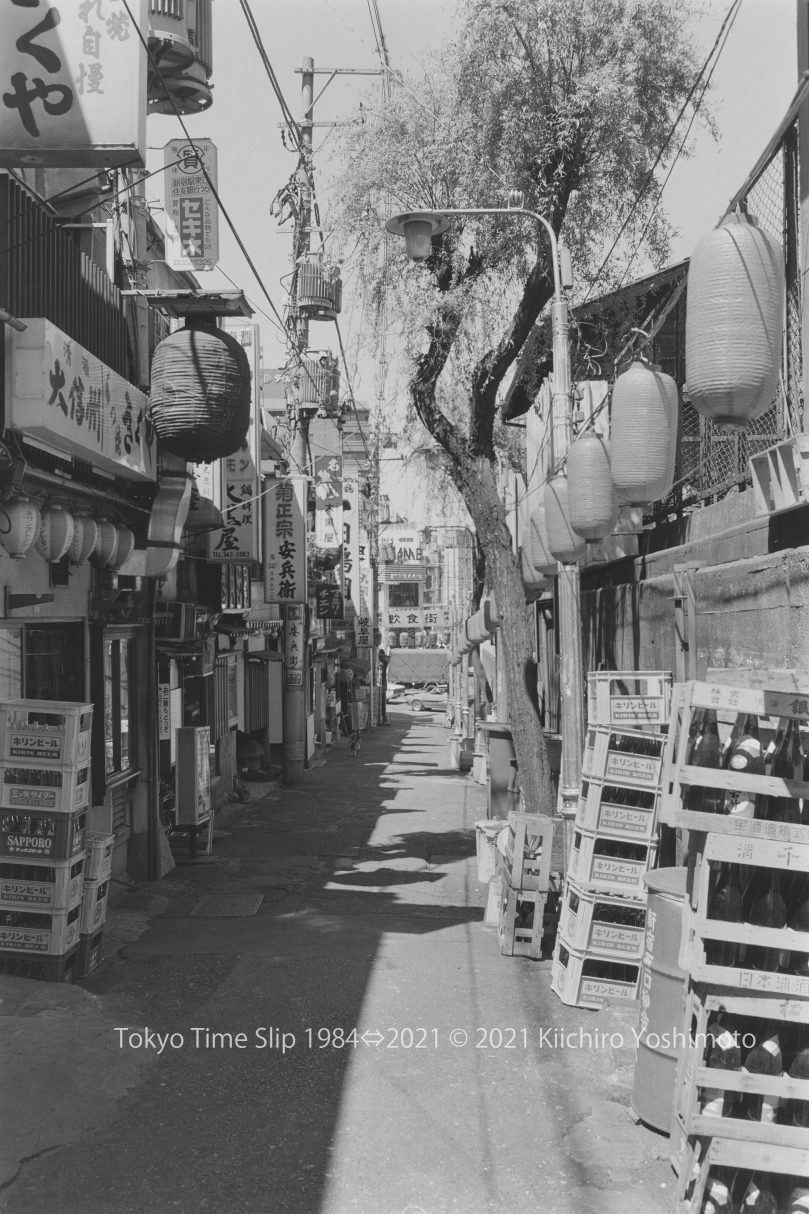
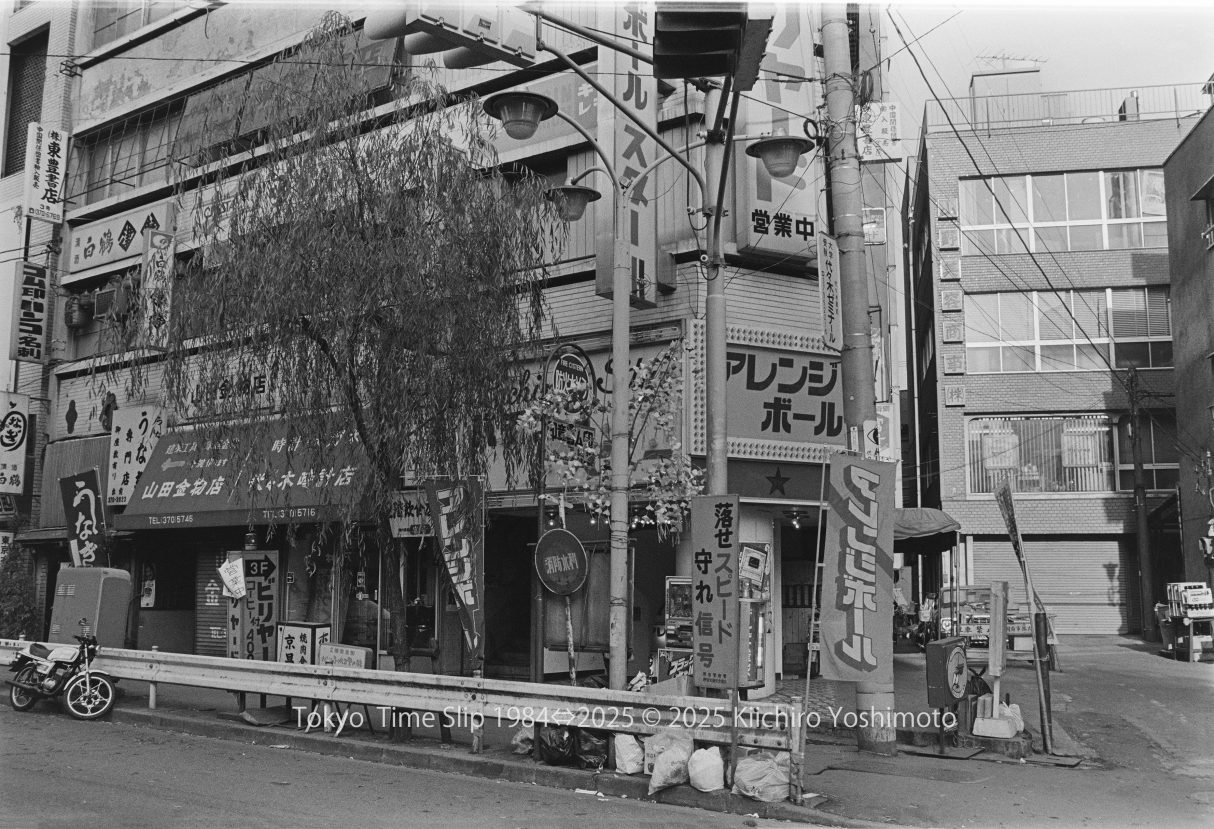
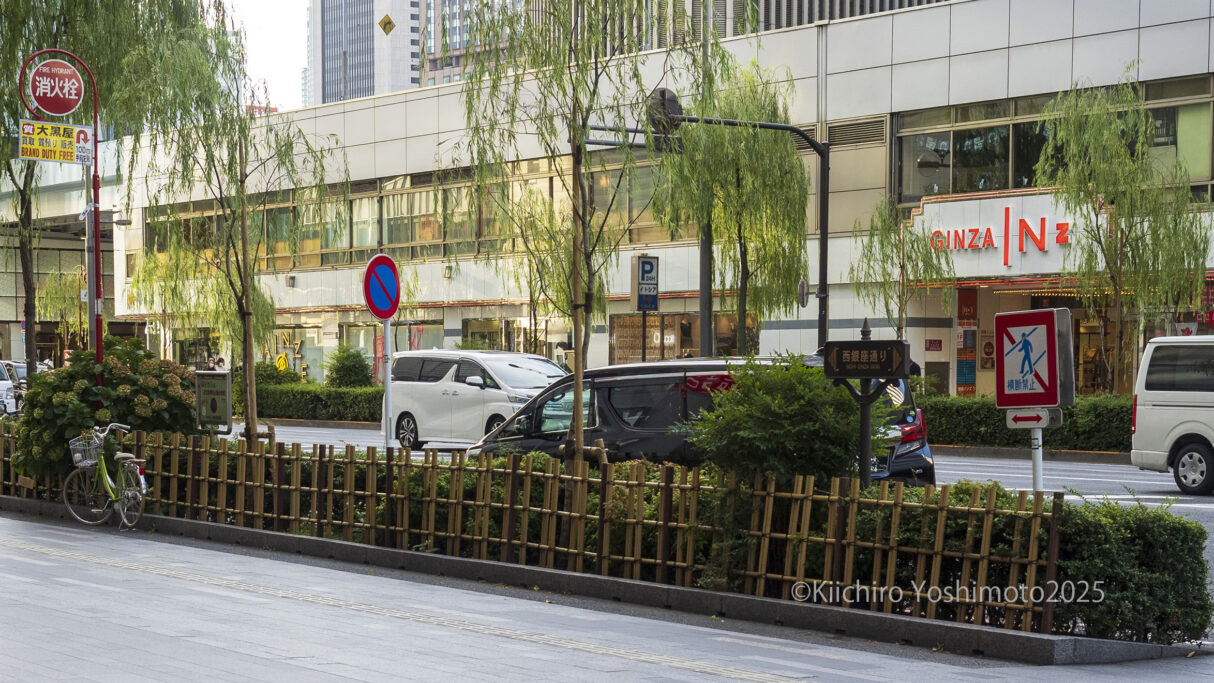

「東京タイムスリップ1984⇔2021」(河出書房新社)
「東京DEEPタイムスリップ1984⇔2022」
「東京RETROタイムスリップ1984⇔2023」
4万5000フォロワー
インスタグラム Tokyo Timeslip
https://www.instagram.com/tokyo_timeslip/

「Tokyo changes fast, and Yoshimoto now finds himself a documentarian of the ages.」
Tokyo then and now: Photographer documents four decades of change | NHK WORLD-JAPAN News



